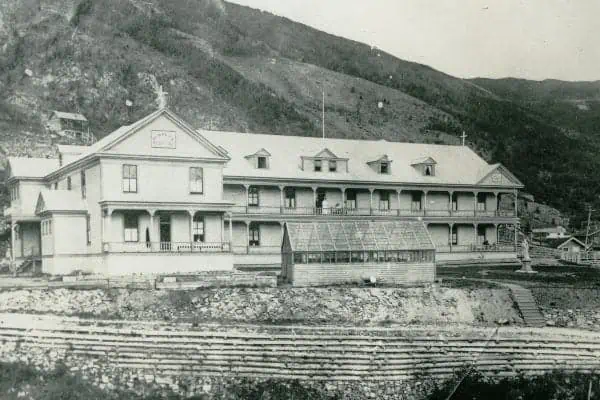Plaque is the subject of this week’s visit to A Klondike Korner.
I’ve visited this subject before, but another one of our buildings is due to be plaqued on June 5, so it seems time to bring it up to date.
Buildings, places or people that are plaqued by the Historic Sites and Monuments Board are judged to be of national significance in some way.
Dawson has 13 of these National Historic Sites at the moment. They celebrate the following people, places or events: Martha Louise Black, Canadian Bank of Commerce, Dawson Historical Complex, Former Territorial Court House, Father William Judge, S.J., Northwest Territories and Yukon Radio System, William Ogilvie, the Old Territorial Administration Building, S.S. Keno, St. Paul’s Anglican Church, Tr’ochëk, Joseph Burr Tyrrell and the Yukon Hotel.
All of these have been designated. There are so many of them for a town this size that our current mayor joked at one council meeting during the winter that the federal government was thinking about giving a few of them back.
(At least, I think he was joking. It’s hard to tell sometimes …)
Not all of the designated sites have plaques associated with them. The Old Territorial Administration Building, better known these days as the home of the Dawson City Museum, was designated back in 2001, but it’s only now going to get its brass plaque so that everyone will know.
I’m going to quote here from the description used on the Parks Canada website back in 2002 when then Heritage Minister Sheila Copps made the announcement:
“When it was erected in 1901, the Old Territorial Administration Building was by far the largest and most elaborate of a number of public buildings designed and constructed to house federal government services in Dawson. Erected at a cost of $100,000, it was the most costly of the Dawson federal buildings.
“Designed by Thomas W. Fuller, resident architect for the federal Department of Public Works, the Territorial Administration Building reflected Dawson City’s rapid evolution from a mining camp to a prosperous capital. Fuller’s use of such architectural elements as pediments, columns, window moldings and colouration, fashioned in shallow relief, gave the new building an elegant appearance that was complemented by formal Victorian landscaping.
“Since 1901, the building has had a variety of tenants, including the Territorial Courts, Post Office, Telegraph Office, Customs, and Mining Recording Office. Later, the building was used for storage and a school. Since 1962, it has been occupied by the Dawson City Museum and Historical Society. As such, it is an important part of the city’s heritage and a keystone in its tourism industry.”
These days, it is also the site of events like a Dawson launch of Michael Gates’ new book, History Hunting in the Yukon and the focal point for such events as Canada Day. It has also recently become the site for Friday’s new movie nights in its audiovisual room after running a weekly program of classic movies for a number of years.
When I first encountered the OTAB in 1977, it was a chilly building that had seen better days and was in need of a facelift. Thanks to one of the few all-party agreements of the last two decades, it got one and it is now one of the nicest buildings on Fifth Avenue and a blessing to the town.
It deserves all the recognition it can get.




